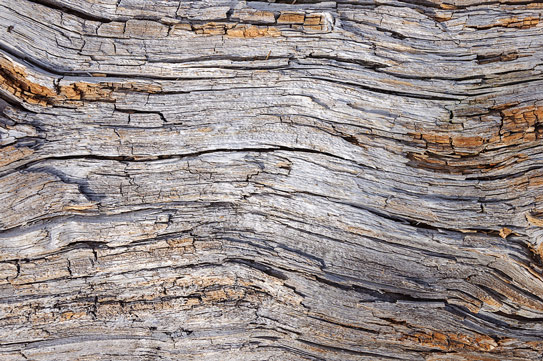
Ironically, the cause of dry rot damage is actually an excess of moisture that makes contact with wood. Dry rot is a condition where fungus slowly breaks down wood fibers, which makes the wood brittle and look aged. When touched, this rotted wood feels dry, so hence the name dry rot was coined.
White Rot - targets hardwood. Look out for white or yellowish discoloration. When touched, the wood will feel spongy, and will have a stringy appearance.
Brown Rot - targets softwood, causes wood to turn a dark brown. Often called "brown cubical rot" as the wood can have the appearance of a checkerboard, because of the way the wood splits across the grain. This type of rot causes wood to become dry and powdery, which is where "dry rot" comes from.
While dry rot can sometimes look like mold on the surface, or damage done by termites or carpenter ants, there are distinct differences between dry rot and other causes of wood damage.
Mold is a kind of fungi that grows on the surface of wood. Mold doesn't break down and weaken wood the way dry rot does.
Meanwhile, the damage done by carpenter ants is evident when wood is being chewed through, and they leave behind tiny piles of sawdust in their wake. You can also spot clean cavities, and this is where they live.
Termite damage is very similar to dry rot, but the wood is wetter and termite galleries will be present.


Download our free brochure, and get detailed information on products and services that can help you transform your basement or crawl space in a safe, healthy living space!
Click Here for Free E-Brochure!An important thing to note is that to prevent dry rot damage, you need to reduce or wholly eliminate the excess moisture. It isn’t as simple as getting a leaky pipe fixed, nor is it as complicated as stopping water infiltration through your basement foundation. One of the most common signs of dry rot and termite damage happens when wood comes into contact with soil, as it happens with a failed foundation.
Drainage and gutters will help to lower the water level around your home. Keeping rain water away from your foundation with proper grading, and cleaning gutters to prevent water from making its way underneath your house and building up there will help prevent dry rot.
You can attempt to do some of these things by yourself, but often that just isn't enough. Without the right professional knowledge, or any of the tools on hand, you may do more harm than good. Here at WiseAire, we have authorized, trained professionals that will be sure to deliver high-quality work, to ensure you will be satisfied now, and in the future. We also have friendly and professional staff in our national headquarters who are always pleased to answer questions about your basement or crawl space.
So what are you waiting for? Call us now at 844-203-1819 or visit our contact page and we can get started with a free estimate, today!
For help with moisture control and mold prevention, contact us today!
Free Estimate!